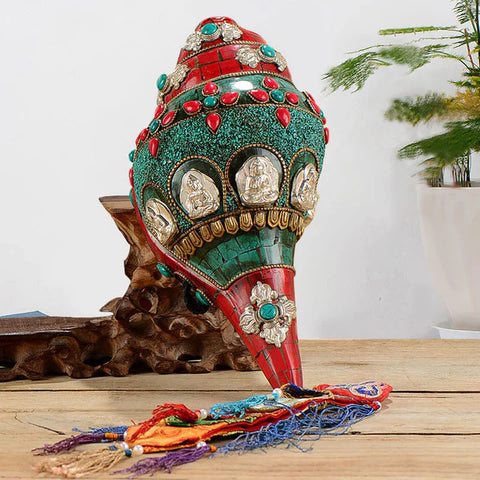Tibetan Conch Shell from Buddha Stones transports you to the majestic Himalayas with its divine sound. Crafted with meticulous attention to detail, this stunning piece enhances any meditation or yoga practice. Embrace the serenity of Tibetan traditions and elevate your spiritual journey with the exquisite Tibetan Conch Shell, perfect for those seeking peace and spiritual growth.
9 itens
9 itens


















